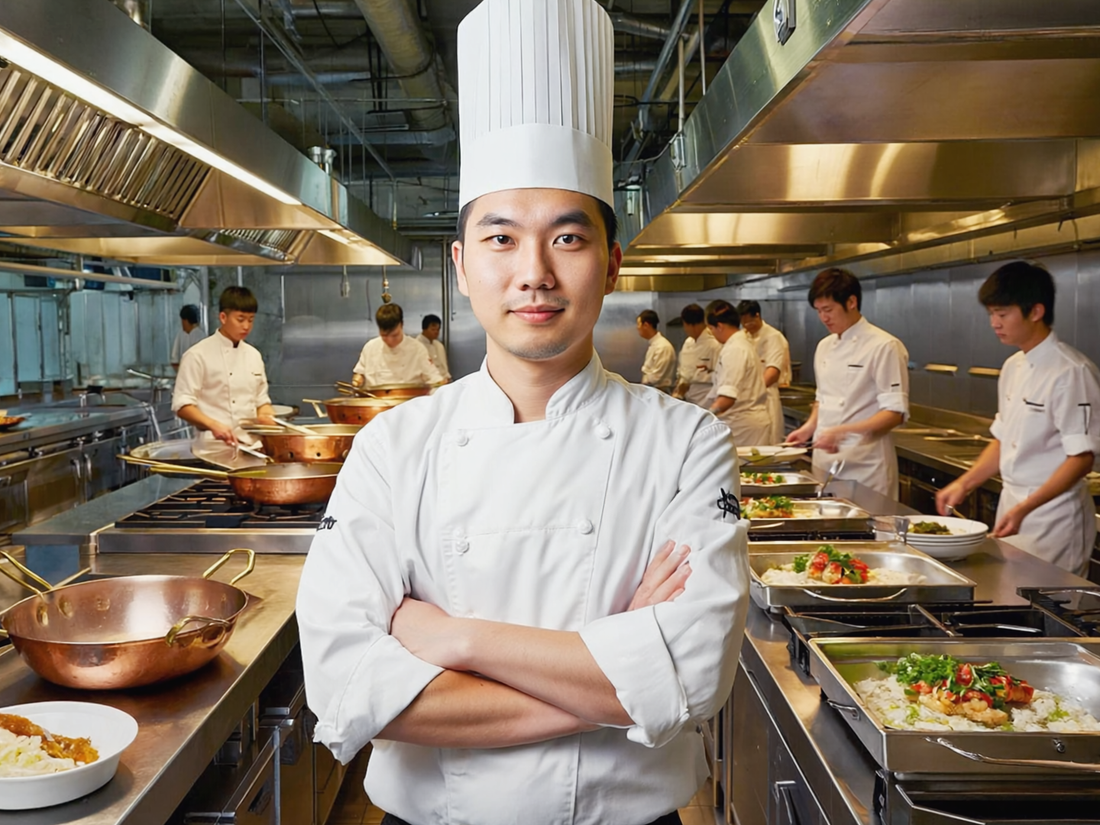
Why Professional Chefs Use Edge-Grain Boards (And When to Choose Another)
Share
Not all cutting boards are created equal. The way a board is constructed—edge-grain, end-grain, or face-grain—makes a huge difference in durability, knife-friendliness, maintenance, and even how much glue is used to hold the board together.
At Kitchen Wing, we specialize in edge-grain boards because they balance professional-grade toughness with everyday practicality. But let’s break down each construction type so you can see which one fits your kitchen best.
Types of Cutting Board Construction
1. Edge-Grain Boards (Chef’s Choice)
Construction: Long strips of hardwood glued edge-to-edge, showing the side of the grain.
Glue Use: Moderate — fewer glue joints compared to end-grain, but more than face-grain.
Strengths: Durable, stable, less prone to warping. Provides a smooth surface that’s gentle on knives.
Best For: Daily cooking, home chefs, and professionals who need a reliable workhorse.
Maintenance: Easy to clean and maintain. Occasional oiling keeps it conditioned.
2. End-Grain Boards (Butcher’s Block)
Construction: Small blocks of wood arranged with the grain facing up (like the end of a log).
Glue Use: High — contains the most glue joints since it’s made of many small blocks.
Strengths: Self-healing surface—knife cuts close up more easily. Extremely durable and resilient.
Best For: Heavy chopping, butchers, and professionals cutting large quantities.
Maintenance: Requires more care; heavier, thicker, and pricier than edge-grain.
3. Face-Grain Boards (Entry-Level)
Construction: Boards cut with the grain flat (like a tabletop).
Glue Use: Low — often one or two wide boards joined together.
Strengths: Attractive grain patterns and affordable.
Best For: Light prep, serving boards, or presentation pieces.
Maintenance: Scratches easily, warps more often, and shortens knife life.
Side-by-Side Comparison
| Feature | Edge-Grain | End-Grain | Face-Grain |
|---|---|---|---|
| Durability | Very High | Extremely High | Low–Moderate |
| Knife Friendliness | Good | Excellent | Poor |
| Maintenance | Easy | Moderate | Difficult |
| Cost | Moderate | High | Low |
| Weight | Medium | Heavy | Light |
| Glue Use | Moderate | High | Low |
| Best Use | Daily cooking | Butchering | Light prep / Serving |
Why Glue Matters in Cutting Boards
Many people overlook this detail, but glue is just as important as the wood itself. Every cutting board (except single-slab face-grain boards) relies on adhesive to bond the pieces together. The more joints, the more glue is required.
This is critical because:
Cutting boards come into contact with food every day.
Inferior adhesives may break down over time, especially with water and cleaning.
Safety is non-negotiable when it comes to surfaces where you prepare meals.
At Kitchen Wing, we use only FDA-approved, food-safe adhesives designed specifically for hardwood bonding. They are waterproof, non-toxic, and long-lasting — so you never have to worry about harmful chemicals seeping into your food.
Why Kitchen Wing Uses Edge-Grain for the Debut Collection
When we designed the Kitchen Wing Debut Collection, our goal was simple: create a board that professional chefs could trust and home cooks could love. After comparing every construction method — edge-grain, end-grain, and face-grain — we chose edge-grain as the foundation of our first collection. Here’s why.
The Perfect Balance
Edge-grain boards strike the ideal balance between strength, knife-friendliness, and practicality.
Durability: The long-grain structure resists warping and cracking better than face-grain.
Knife Protection: The surface is smooth and gentle, protecting your blades from premature dulling.
Ease of Care: Requires simple oiling and cleaning, unlike end-grain blocks that demand more upkeep.
Fewer Glue Joints, More Stability
In cutting board design, glue is just as important as the wood itself. The Debut Collection uses an edge-grain layout, meaning fewer glue joints than an end-grain block but more than a single face-grain slab. This keeps the board:
Structurally stable without being overly heavy.
Long-lasting with less risk of seam failure.
Safe, since we use only FDA-approved, food-safe adhesives that are waterproof, non-toxic, and built to withstand years of kitchen use.
A Professional’s Choice, Accessible to All
Professional chefs prefer edge-grain because it’s a true workhorse — tough enough for daily prep yet not overly demanding in care. For our Debut Collection, that means you get:
A board that looks beautiful on your counter.
A tool designed for longevity.
Confidence that every detail, down to the glue, was chosen with your safety in mind.
Our Promise
By choosing edge-grain for the Debut Collection, we made a promise: to deliver professional-grade quality with everyday practicality. Whether you’re slicing vegetables for dinner or breaking down a roast, your Kitchen Wing board is crafted to serve you for a lifetime.
